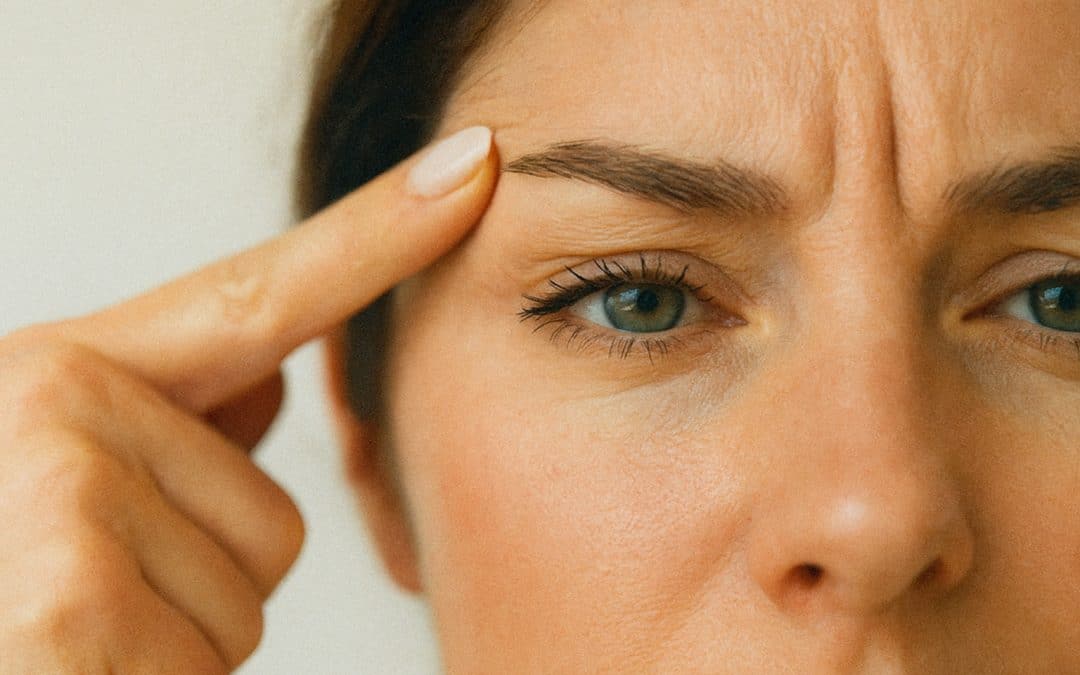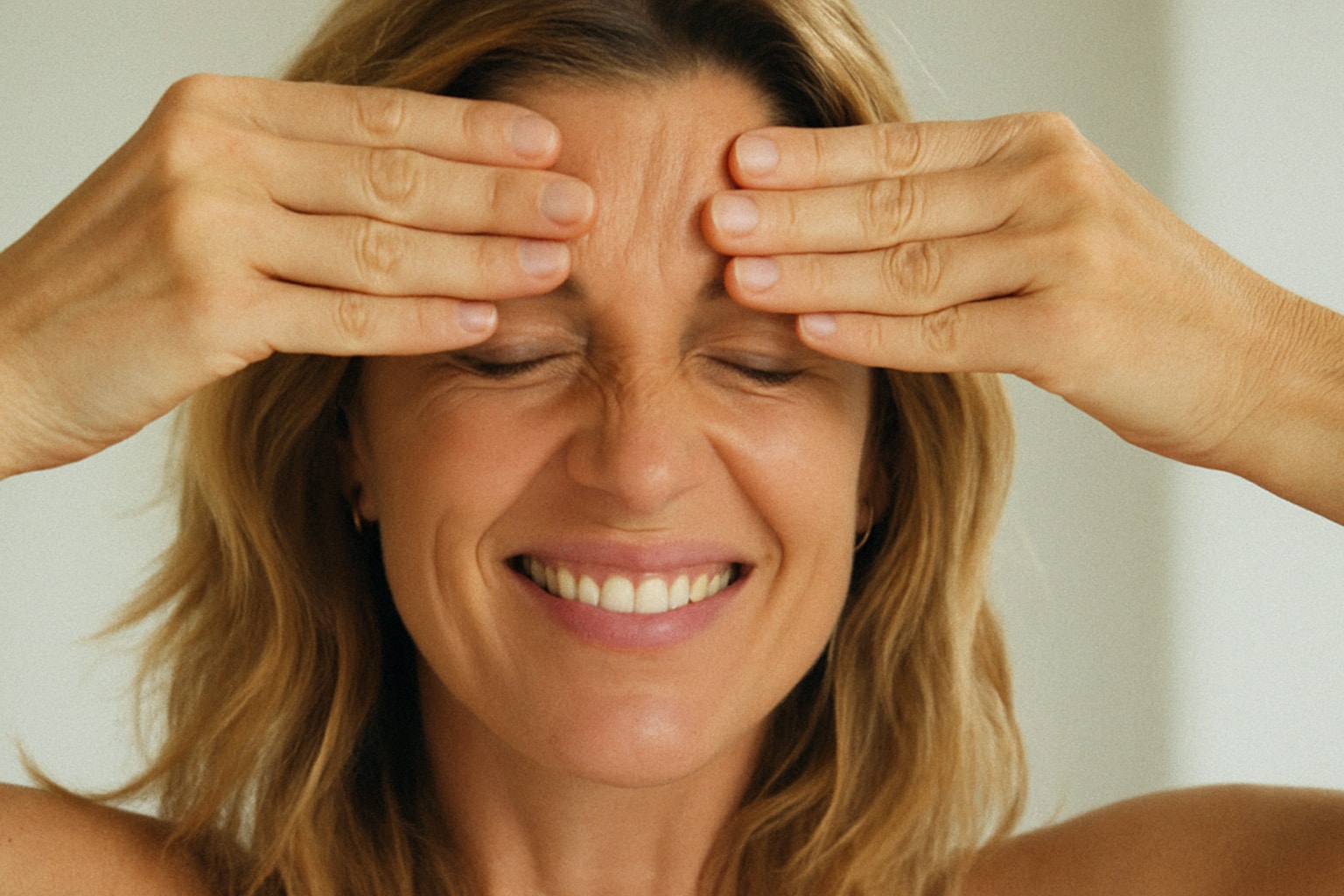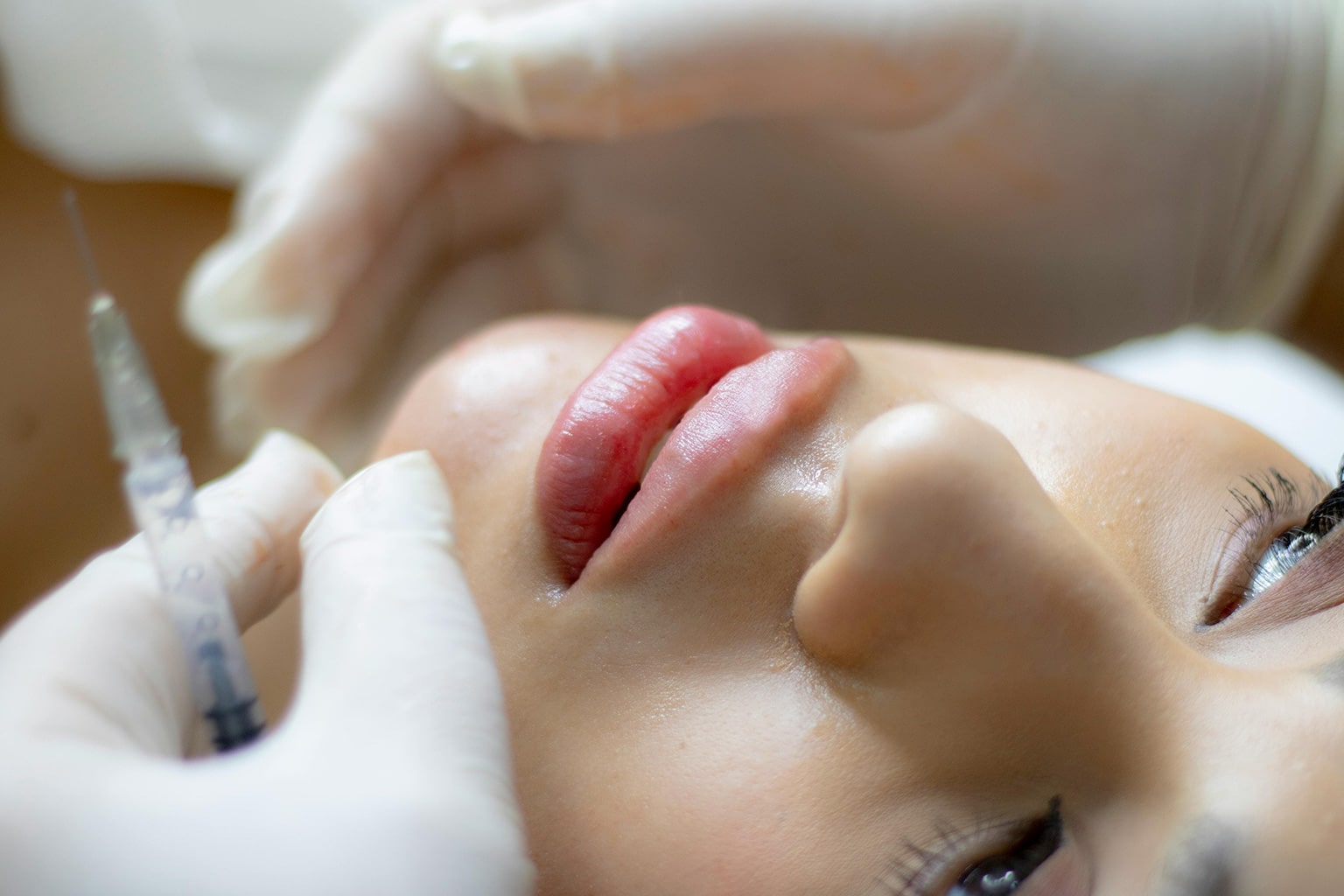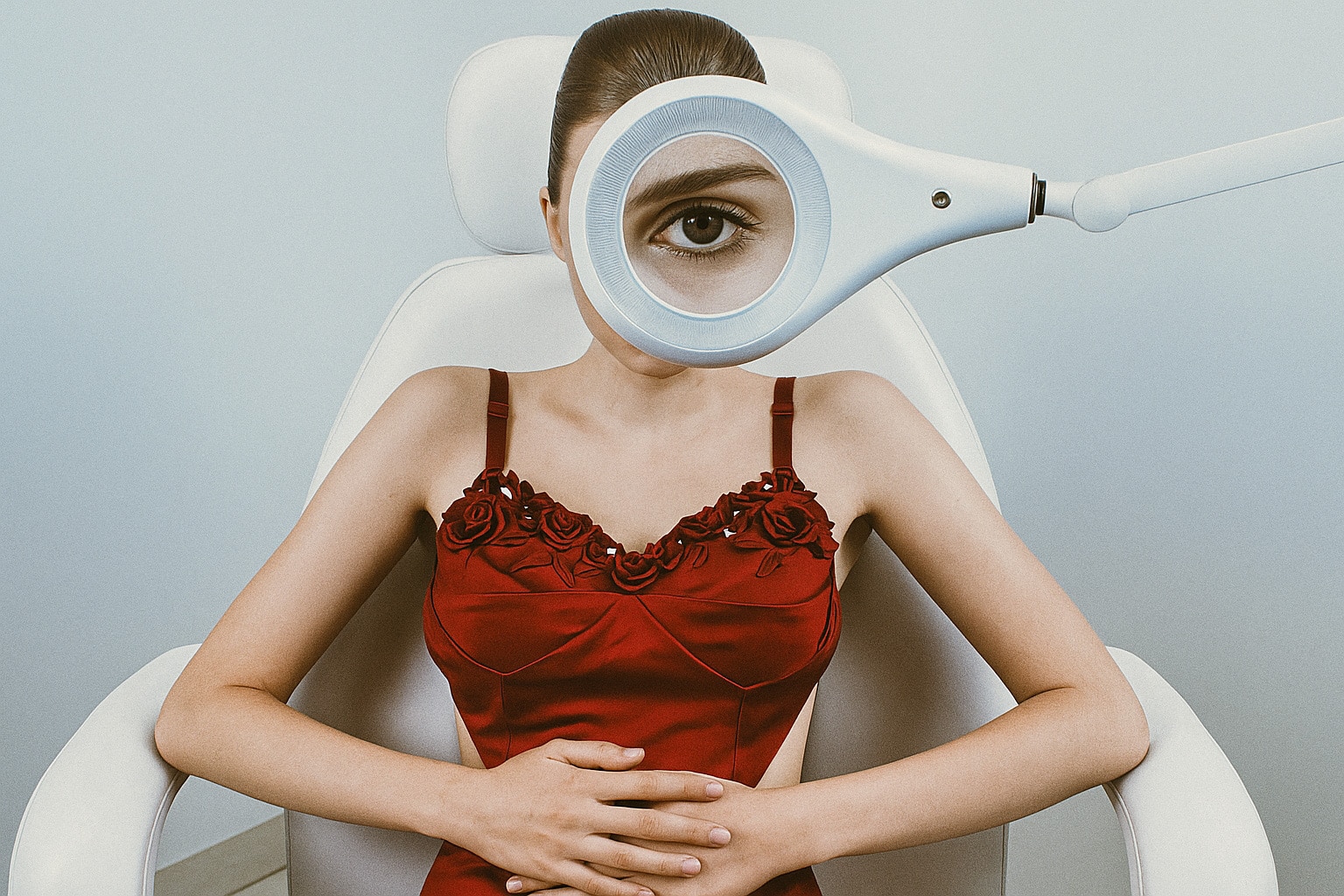Your gaze has changed. Less open, less sharp. No matter how much you sleep, you still hear: “You look tired…”. It’s not just a question of rest – your drooping eyelids may have something to do with it. Before considering surgery, there are gentle solutions, such as hyaluronic acid injections, that can give your eyes back their support and light. We explain everything.
Understanding the causes of droopy eyelids
Droopy eyelids are not just a question of aesthetics. They can also impede vision and make you look tired or sad. Before considering blepharoplasty, it’s useful to understand why this happens.
Natural aging
With age, skin loses collagen and elasticity. Muscles relax. As a result, the upper eyelids droop. This is a normal process. But in some people, it becomes more pronounced.
This is called ptosis. This is when the eyelid droops to the point of covering part of the pupil. This can limit the field of vision.
Genetic factors
Genetics play a role. If your parents or grandparents had droopy eyelids, you’re more likely to have them too. Even at a young age, drooping eyelids can appear.
Fatigue and lifestyle
Lack of sleep, stress, alcohol or tobacco accentuate the effect of fatigue on the eyes. The eyelids appear heavier. Strictly speaking, this is not ptosis, but the appearance is similar.
Poor hydration or a diet lacking in nutrients can also play a role. Skin becomes thinner and more fragile.
Medical problems
Sometimes, ptosis is linked to a health concern. Here are a few examples:
- Nerve damage (as in myasthenia gravis)
- Trauma or injury to the eye
- Complications after eye surgery
In these cases, it is important to consult an ophthalmologist or neurologist. Treatment will depend on the cause.
Excessive use of screens
Spending too much time in front of the screen tires eye muscles. This can accentuate the sensation of heavy eyelids. It’s not ptosis, but the visual effect is there.
Regular breaks, eye relaxation exercises and good posture can help.
Aesthetic consequences
Drooping eyelids make you look sad, tired and sometimes even severe. Many people look for alternatives to restore a fresher appearance. This can range from a firming cream to Botox or filler injections.
When gentle solutions no longer suffice, blepharoplasty becomes an option. But before that, there are remedies and treatments to try.
Non-surgical solutions to correct drooping eyelids
Botox injections
Botox® injections are widely used to correct mild ptosis. Visit Botox acts on the muscles responsible for eyelid droop. It relaxes them. This opens up the eyes.
Botox is injected into the orbicularis muscle. It slightly raises the eyelid. The effect lasts approximately 4 to 6 months. Treatment is rapid. Results are visible within a few days.
These injections are suitable if :
- You’re looking for rapid treatment without social eviction
- You have mild ptosis
- For a natural, reversible effect
Injections are often combined with other remedies such as firming creams or muscle relaxation exercises for an overall effect.
Ultherapy Prime
Ultherapy Prime is a non-invasive technique that uses microfocused ultrasound to firm the skin and contour the eyelids. Unlike other treatments, it works in depth, without surgery, by stimulating the natural production of collagen.
The device targets sagging areas around the eyes with extreme precision. The skin is gradually tightened, providing a natural, long-lasting lifting effect. Ultherapy Prime is particularly indicated for slightly drooping eyelids, in patients who wish to avoid surgery.
Results appear within a few weeks, with gradual improvement over 2 to 3 months.
This method is recommended if :
- You prefer treatment without injections or incisions
- You have moderate to mild ptosis
- You’re looking for a subtle, natural yet lasting effect
The treatment can be performed alone or in conjunction with injections, for a more harmonious overall result.
Exercises and massages to tone the eyelids
Before you think about blepharoplasty, there are simple alternatives to improve the appearance of drooping eyelids. Certain exercises and massages can help strengthen the muscles around the eyes. This doesn’t replace medical treatment, but it can delay the need for surgery.
Why work the eyelids?
With age, the skin loses its elasticity. The eyelids become heavier, known as ptosis. This makes the eyelids look tired. By stimulating this area, we can promote the natural rejuvenation of the eyes.
Exercises are designed to tone the orbicular muscles (those surrounding the eye). Massages improve blood and lymph circulation. The result: better preservation of tone and a gentle lifting effect.
3 simple exercises to do at home
- Upward gaze: Close your eyes. Look up (eyelids closed) for 5 seconds. Release. Repeat 10 times. This strengthens the upper eyelids.
- Finger resistance: Place your index fingers under your eyebrows. Pull them up slightly. Close your eyes, resisting the pressure. Hold for 5 seconds. Repeat 10 times.
- Rapid blinking: Blink rapidly for 30 seconds. This stimulates the muscles and promotes relaxation.
Do these exercises once or twice a day. It’s fast, safe and costs nothing.
Eyelid massage techniques
Massages can relax tissues and improve circulation. They are useful for people who experience eyestrain or heaviness.
Here’s a simple method:
- Wash your hands.
- Apply a gentle cream or oil around the eyes.
- Using your ring finger, gently massage the eye contour in small circles. Work from the inner corner outwards.
- Lightly tap the upper eyelid with fingertips for 30 seconds.
This gesture promotes lymphatic drainage. It helps reduce puffiness and provides an immediate skin-care effect.
Combining massage and the right products
Using a suitable cream can enhance the effect of the massages. Choose a cream rich in peptides or retinol (in small quantities around the eyes). These ingredients stimulate collagen production.
Avoid products that are too greasy or perfumed. The skin of the eyelids is thin and reacts quickly. A good product complements natural remedies such as exercise.
What can we expect?
These alternatives do not give immediate results. You need to be regular. Within a few weeks, a slight improvement in tone and a reduction in feelings of fatigue can be observed.
For more severe cases of ptosis, solutions such as Botox or laser therapy may be considered. But first, these simple gestures are worth a try.
Cosmetic care and adapted products
Before thinking about eyelid surgery, there are simple alternatives to try. Cosmetic care and certain targeted products can help improve the appearance of drooping eyelids. It’s not magic, but it can make a real difference to everyday life.
Eye contour creams and serums
Some products are formulated to firm the skin and reduce mild ptosis. They often contain ingredients such as:
- caffeine: to stimulate circulation and reduce puffiness
- retinol : to smooth fine lines and firm skin
- peptides: to strengthen muscles and skin structure
- hyaluronic acid: to moisturize and plump
These creams are applied morning and night, patting gently onto the mobile eyelid and under the eye. You need to be regular to see an effect. Results are often subtle, but visible after a few weeks.
Eye patches and masks
Hydrogel patches or specific eye masks are practical for a “radiance boost”. They offer immediate relaxation and a temporary tightening effect. Perfect before an event or after a short night.
Some contain niacinamide, collagen or even colloidal gold. These ingredients boost eye aesthetics and give an express rejuvenating effect .
Corrective make-up
Make-up can visually camouflage fatigue and open up the eyes. Here are a few simple tips:
- use a smoothing base on the eyelid
- apply a light shade to the center of the mobile eyelid
- draw a thin, raised line of eyeliner
- avoid dark shadows all over the eyelid
It’s not a treatment, but it improves appearance immediately. And it gives natural beauty a boost.
Non-invasive professional care
Some institutes offer specific eyelid treatments:
- Radiofrequency: heats the skin to stimulate collagen
- Soft laser therapy : for smoothing and firming
- Microcurrents : to tone the muscles around the eyes
These techniques are gentle and non-surgical. They require several sessions. Results are progressive. They can delay the need for blepharoplasty.
Products to avoid
Certain products can aggravate the situation. For example:
- creams that are too greasy and weigh down the eyelids
- scented skin care products that irritate the fine skin around the eyes
- drying products containing alcohol
It’s best to choose formulas that have been ophthalmologically tested, especially if you wear contact lenses or have sensitive eyes.
When products are no longer enough
If, despite treatment, ptosis worsens, or interferes with vision, other remedies should be considered. Botox or filler injections can help temporarily. Otherwise, blepharoplasty remains the most effective treatment for a true eyelid lift.
Comparing alternatives: cost and efficiency
Before you think about blepharoplasty, there are several alternatives for treating drooping eyelids. Some are simple, others more technical. The choice depends on your budget, your expectations and the degree of drooping.
1. Firming creams and cosmetic care
Anti-aging creams target the fine skin around the eyes. They promise a tightening effect. It’s often a gentle treatment to start with.
- Cost: between CHF 30 and 150
- Effectiveness: slight, visible in the short term if used regularly
- Duration of effects: temporary, requires continuous application
Ideal for the early stages of sagging. Less useful if ptosis is marked.
2. Eyelid muscle exercises
Some facial exercises target the muscles around the eyes. They help tone the area.
- Cost: free of charge
- Effectiveness: moderate, especially for prevention
- Duration of effects: depends on regularity
Good option for maintaining healthy eyelids. But results are slow and subtle.
3. Botox
Botox relaxes certain muscles to open up the eyes. It does not remove excess skin, but it does improve appearance.
- Cost: between CHF 390 and 690
- Effectiveness: good for mild to moderate cases
- Duration of effects: 4 to 6 months
Fast, surgery-free. Recommended if eye fatigue is linked to muscular tension.
Quick comparison
| Alternative | Cost (CHF) | Efficiency | Duration |
|---|---|---|---|
| Creams | 30 – 150 | Slight | Temporary |
| Exercises | 0 | Moderate | Variable |
| Botox | 390 – 690 | Good | 4 to 6 months |
Each remedy has its limits. But in combination, they can postpone the need for surgery. The key is to choose a treatment that’s right for your skin, your age and your expectations.
Personalized advice to prevent eye fatigue
Eye fatigue can accentuate the appearance of drooping eyelids. Before considering blepharoplasty, it’s a good idea to adopt a few simple gestures to relieve eye strain on a daily basis.
1. Take regular breaks
Staring at a screen for too long can tire the muscles around the eyes. Apply the 20-20-20 rule: every 20 minutes, look at an object 20 meters away for 20 seconds. This helps to relax the eyes and reduce the ptosis associated with visual tension.
2. Moisturize your eyes
Dry eyes strain more. Use moisturizing drops (preservative-free if possible) to maintain good lubrication. Drinking enough water also helps maintain eye health.
3. Adapt your lighting
Lighting that’s too bright or too dim can aggravate fatigue. Choose natural light or a soft lamp directed towards your work surface. Avoid screen reflections, which force your eyes to adjust constantly.
4. Exercise your eyes
A few simple movements can strengthen the muscles around the eyes:
- Look from left to right without moving your head
- Make circles with your eyes in one direction, then the other
- Close your eyes tightly for 5 seconds, then release.
These exercises can improve tone and slow down fatigue-related ptosis.
5. Apply the right care products
A well-chosen eye contour cream can reduce signs of fatigue. Look for formulas with caffeine or hyaluronic acid. These ingredients help decongest and smooth the area, improving overall appearance.
6. Get enough sleep
Quality sleep is essential. Short nights accentuate puffiness, dark circles and ptosis. Try to get 7 to 8 hours of sleep a night. A cold compress in the morning can also help reduce eyelid puffiness.
7. Relax your eyes with simple techniques
Close your eyes for a few minutes and breathe deeply. You can also place your palms on your closed eyelids. This relaxation reduces eye tension and helps preserve the aesthetics of the eyes.
8. Adopt good posture
A screen that’s too low or too high forces you to frown or open your eyes exaggeratedly. This can cause eyelid fatigue. Keep the screen at eye level, at a distance of about 50 cm.
9. Consult if necessary
If, despite everything, fatigue persists and the eyelids seem to droop more, a check-up may be useful. Sometimes, a light treatment such as Botox or a well-placed filler can provide a lifting effect without surgery.




